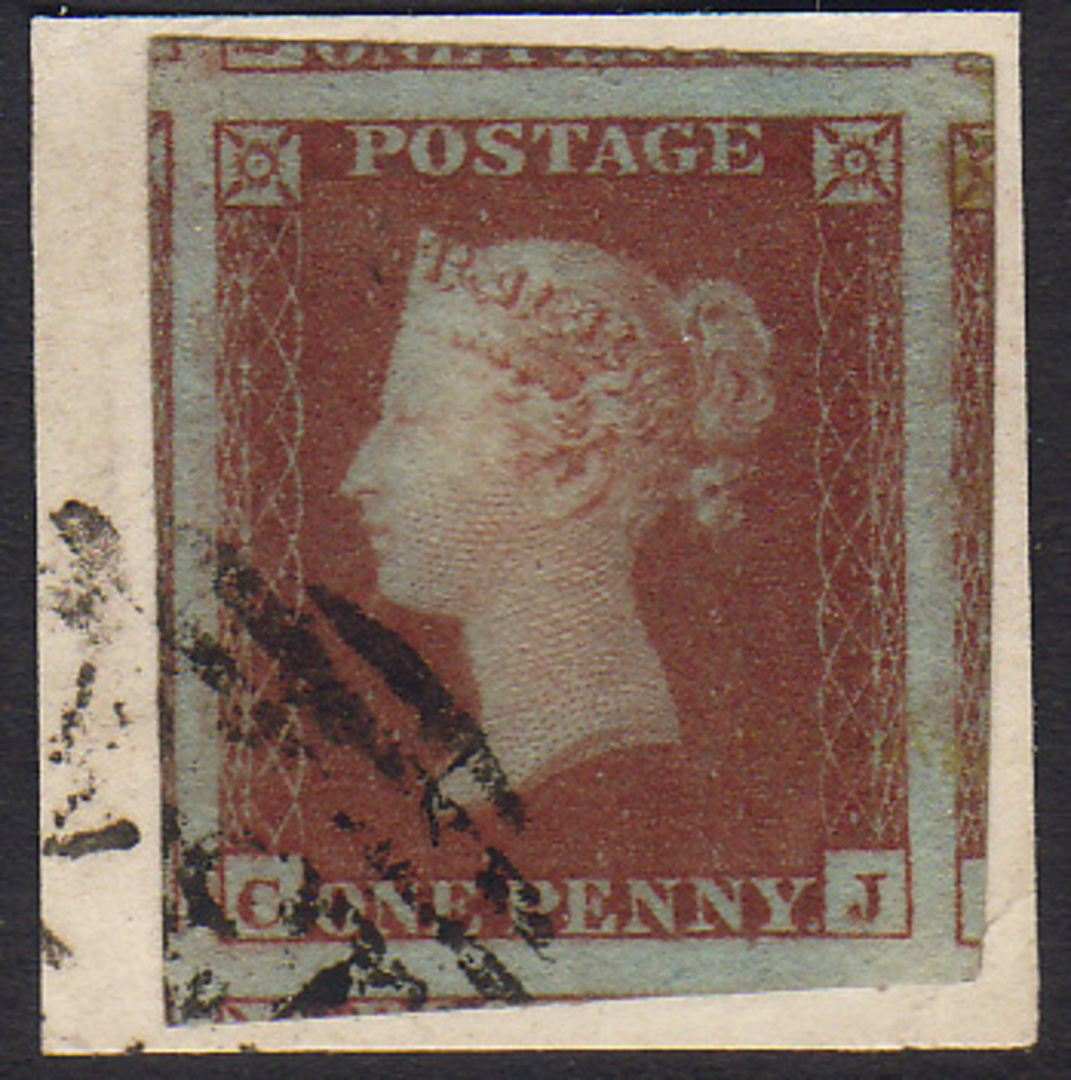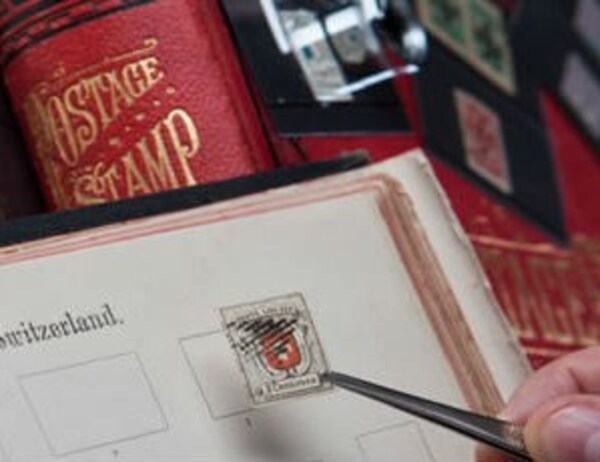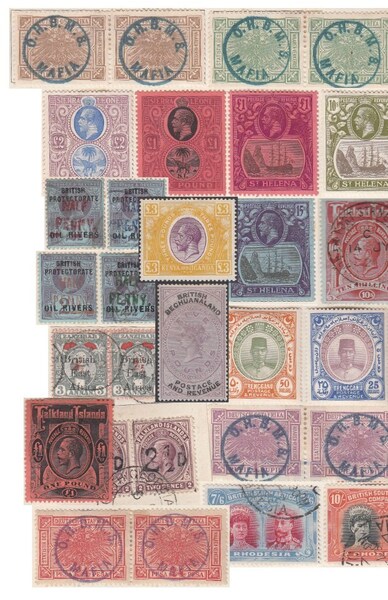The British Penny Reds of Queen Victoria 1841 to 1862
I will get my apologies in early. This is a big subject and in this article I hope to give a simple overview of a very complex, but truly fascinating area of early philately.
Are these stamps the most studied ever? I think so, but I am braced for the backlash! I promise to try and write something about alternatives you may suggest.
In 1840 the Penny Black was issued. A smart design (how did they know what a stamp should look like? There hadn’t been one before!) But a not-so-smart colour (the black postmarks didn’t show too well and the red postmarks were a little too easy to remove) so it was decided to continue printing these popular “Queens Heads” but in red. At first 7 of the 11 plates used for the Penny Blacks were changed to red ink. These reds from the so-called “black plates” are listed as SG 7. It is interesting to note that the Penny Black plate 11 was actually printed in red a few days BEFORE it was printed in black!
Printing continued in red and in February 1841 the first purely red plate, number 12, was registered for use.
The imperforate Penny Reds continued to plate 177 and in perforated form to 204, but it is helpful to divide these into smaller groups:
PLATES WITH CORNER LETTERS FROM ALPHABET I & DIE I HEADS.
(Once a few stamps are gathered together it is easy to spot the differences between the two alphabets used to create the corner check letter combinations)
Plate 12 to 36, amongst other indicators almost always have Maltese Cross cancellations as they were issued during the 1841 to late 1843 / early 1844 period.
Plates 37 to 45 mark the period of cancellation change and occur with both Maltese Cross and numeral pmks.
Plates 46 to 58 nearly all have numeral postmarks with most plates showing a regular flaw to the “T” and “E” of “POSTAGE”
Plates 59 to 75 shows a change to the corner alphabet letters “O” and “J” and the shades are often more red than red-brown. Two of these (plates 70 and 71) were used in 1848 to trial a roulette-perforating machine.
Plates 76 to 87 often shows malformed or badly misplaced corner letters, this group includes perhaps the most impressive error of all, the missing “A” from position “BA”.
Plates 88 to 91 a small group with corner letters less badly placed with the left letter often placed to the left of its square. Plate 90 almost every stamp has strong recut frame lines.
Plates 92 to 101 the shades are often more pale red with the corner letters slightly smaller than previously (although still in the alphabet I group) and clearer. All the corner squares were recut so there are often extending frame lines. All these plate were also used during 1850 – 1854 for trial perforations.
Plates 102 to 131 not an easy group but like all plates can be identified by a process of elimination, many stamps from these plates occur on a slightly thicker lavender – tinted paper.
PLATES WITH CORNER LETTERS FROM ALPHABET II
As I’ve already said, once a few stamps are gathered together it is easy to spot the differences between the two alphabets used to create the corner check letter combinations. Those IMPERFORATE stamps with letters from alphabet II will be from plates 132 to 177 and were printed during 1852 and 1853. Several of these plates were additionally used when official perforating commenced in 1854 so it is possible to obtain imperf & perf examples of the same stamp. We tend to see 1853 duplex type postmarks on the later plates of which 175, 176 & 177 are substantially scarcer than the rest.
PERFORATING TRIALS
Took place during 1848 & 1850 to 1854, there are several significant rarities but the most accessible to collectors are the stamps from plates 90 to 101 (as mentioned above) and are listed as SG 16b, this same catalogue number encompasses several other plates from 105 to 116 but they are rare.
OFFICIALLY PERFORATED
These Penny Reds appear with combinations of blued and white papers, small and large crown watermarks and perforated 14 or 16. These are clearly laid out in the SG catalogue listing primarily into blued paper (SG 17 – 35) and white paper (SG 36 – 42) groups. They can have letters from alphabets II & III. Here we say goodbye to the original Penny die I head design as plates 155, 157, 162 to 204 (plus a few reserve plates) were used in this blued paper period.
HEADS FROM DIE II.
Penny Reds from a new die II were prepared and also in use during the blued & white paper periods, they occur with both alphabets II & III and new plates numbered 1 to 68 (and a reserve plate 17) overlapped usage on several different combinations of paper, watermark & perf.
OK, I’M INTERESTED. WHAT NOW?
As you can imagine there is a lot more to this fascinating area than my brief outline above, there have been many good books written on this subject. If you have a copy of either the SG GB Concise or Part 1 Commonwealth catalogues then you will have the basic structure of these issues laid out for you. To take things further we would recommend the SG Great Britain Specialised Stamp Catalogue for Queen Victoria. This fabulous work offers up the collective wisdom of generations of specialists in the subject. To take things further still there are works devoted to identifying individual plates, in particular the 18 volume set “The Essential Guide to the Great Britain Line Engraved 1d and 2d Stars 1840 – 1864” by Kenneth Statham which aids the plater by listing the guide lines, re-entries, repairs, rubs & corner letter positions amongst the many other helpful clues to be found on these stamps.
We also have a rare set of original photographs of the imprimatur sheets for plates 12 to 204. This will be offered in one of our forthcoming sales, please let us know if you would like to be alerted via our Specialists Register when they appear (that’s what the service is great for!)


 General
General
 General
General
 General
General